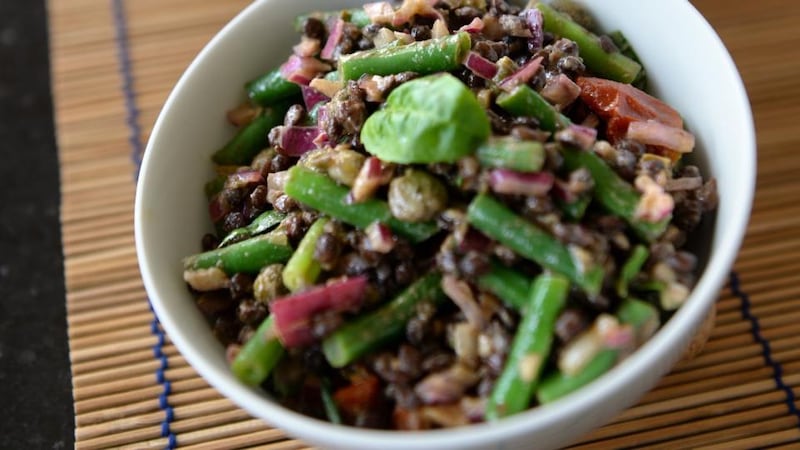Weighing yourself tells you little or nothing about your health. It doesn’t take into account your age, your gender or even your height. It’s time to stop focusing on weight and start focusing on body composition.
Calculating your BMI may not be particularly useful either. It’s a measurement of your weight and height. Calculators are found on many health websites. But it can overestimate your body fat if you have a muscular build or underestimate body fat in those people who have lost muscle.
When used as part of a wider assessment of body composition, BMI is a good gauge of your risk of disease. For example, the risk of developing diabetes becomes 10 times higher at a BMI of 30.

The question we need to ask is not "What weight should I be?" but "What should my body fat be for my age, height and gender?" and "What type of fat am I carrying?"
'Deep' fat
Visceral or "deep" fat wraps around your organs and drives up the risk of many diseases, even dementia. If you have a large waistline or belly, then you probably have more visceral fat than is healthy.
This deep fat churns out hormones associated with insulin resistance and glucose intolerance, increasing the likelihood that you will develop diabetes.
It also produces proteins called cytokines, which can trigger low-level inflammation and metabolic abnormalities, risk factors for heart disease and dementia.
Subcutaneous fat, the pinchable padding we carry directly under our skin, may look unattractive, but it’s not considered a health threat.
However, evidence is emerging that the danger of belly fat lies not only in the deep visceral fat, but also in our subcutaneous fat in that region.
It’s difficult to determine the levels of visceral and subcutaneous belly fat except by CT scanning or with a BodPod, which of course is not cost-effective.
Measuring fat
A calliper will measure only subcutaneous fat, so it's not particularly useful.
Many hospitals and clinics are now using body composition analysers to help patients understand what is going on inside the body by categorising weight into muscle mass, water and body fat. Estimates of visceral and subcutaneous fat are given by bio-electric impedance.
Changes in weight can be tracked and this type of measurement is simple, non-invasive and reliable as long as the rules are followed. Ideally, before you stand on the scales, you should not: eat or drink for at least 30 minutes; exercise for at least 12 hours; drink alcohol for at least 48 hours; or ingest any diuretics unless prescribed by your doctor.
You should also urinate 30 minutes before the measurement is taken.
Perhaps the simplest way to check for fat around the middle is to measure your waistline with a tape measure.
Women should aim for a waist circumference less than 88cm (35in) and men 102cm (40in). It won’t give you a breakdown of visceral vs subcutaneous fat, but it’s a pretty good measure of risk all the same.
"How you lose fat may be just as important as how much fat you lose," says Samuel Klein, professor of medicine and nutritional science at Washington University School of Medicine.
Klein led an interesting study in 2004 that showed obese patients could instantly lose 30 pounds or more of subcutaneous fat through liposuction.
However, there were no health benefits, such as lower blood pressure, lower cholesterol and greater sensitivity to insulin, associated with this type of weight loss. Unfortunately, liposuction has no impact on visceral fat levels and is not a substitute for eating well and exercising.
The bottom line is that when it comes to visceral fat, the solution is not in fat-loss supplements or a few sit-ups. Sure, crunches and sit-ups can tone the abdominal muscles and improve your shape, but a tailored exercise and eating programme is fundamental.
RECIPES
Pesto with cod and butter beans
Serves 4
Ingredients
4 cod fillets
4 tbsp red pesto
1 tbsp olive oil
2 x 410g cans butter beans, drained
2 garlic cloves, crushed
225g bag spinach
Squeeze of lemon juice
Method
1. Preheat the grill to medium. Spread each cod fillet with 1 tbsp red pesto and grill for 10-15 min until the flesh is opaque and just cooked.
2. Meanwhile, heat the oil in a pan, and add the butter beans and garlic. Cook for 10 minutes, stirring occasionally and mashing the beans lightly as you do.
3. Just before serving, add the spinach and allow it to wilt for two-three minutes.
4. Spoon the butter bean mash onto warm plates and top with the cod and any juices. Squeeze a little lemon juice over the fish and serve.
A salad of substance
Suggestion: serve with a wedge of frittata.
Serves 6
Ingredients
200g puy lentils
2 bay leaves
500ml water
150g French beans, cut in three
150g sun-blushed tomatoes
1 red onion, finely chopped
20g chopped basil
2tbsp white wine vinegar
2tbsp capers, roughly chopped
1tbsp Dijon mustard
60ml extra virgin olive oil
Method
1. Place the lentils into a saucepan with the bay leaf and water. Bring to the boil, cover and simmer for 15-20 minutes until the lentils are tender. Drain the lentils and cool under running water, remove the bay leaves.
2. Blanch the beans in boiling water for about three minutes, drain and cool under running water.
3. In a bowl, whisk together the red onion, mustard, capers, white wine vinegar and olive oil.
4. Mix together the lentils, sun-blushed tomatoes and beans. Pour over the dressing and half the basil, mix together. Sprinkle the rest of the basil over the top and serve.
Paula Mee is a dietitian and a member of the Irish Nutrition and Dietetic Institute. medfit.ie.
Tweet @paulamarymee










